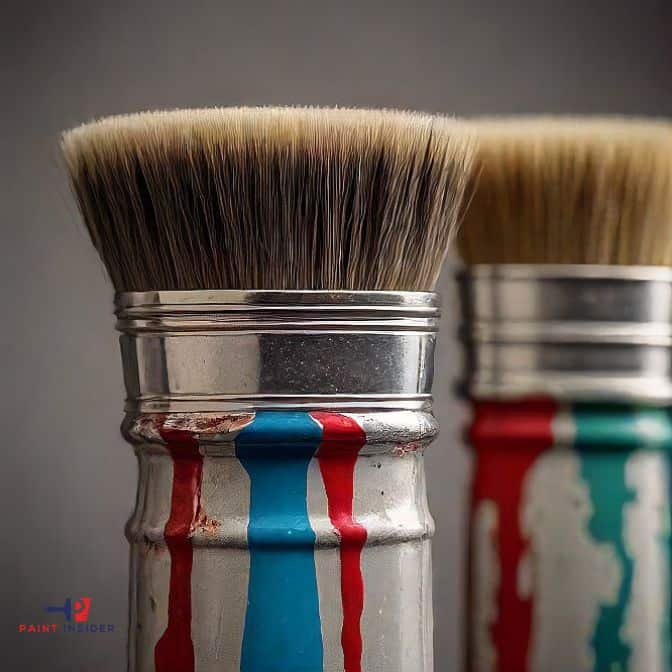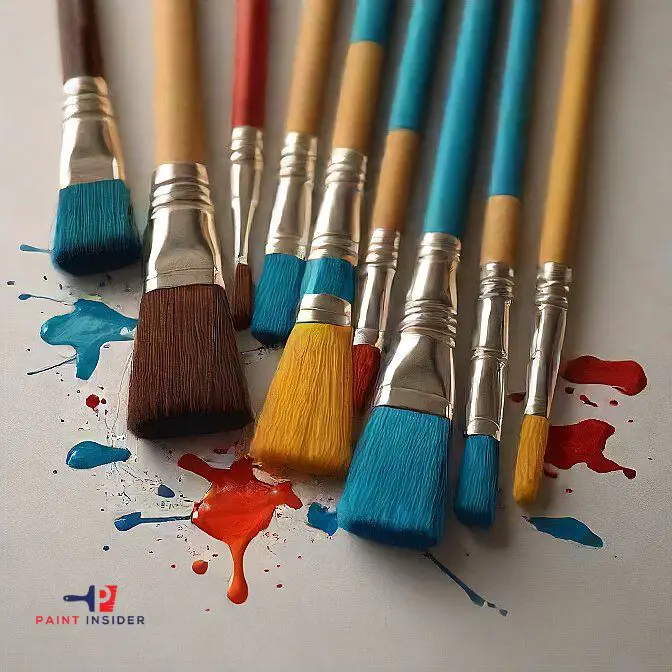We always want to know how to use paint thinner to clean brushes professionally as the brush is your most important piece of painting equipment, keeping it in good condition. Whether you’ll use oil, latex, or whatever paint, you need proper brushes. Good brushes always want the money, so keep it in good condition always. Let’s discuss the methods of cleaning paint brushes with thinner after completing the painting.
Introduction: Importance of Cleaning Paint Brushes
Cleaning paint brushes is often overlooked in the excitement of a new project, yet it holds significant importance for both quality and longevity. Neglecting to clean your brushes properly can result in hardened bristles that compromise the precision of your next stroke. By ensuring your tools are well-maintained, you not only enhance their performance but also save money in the long run no one wants to invest in a set of brushes only for them to be rendered unusable due to dried paint residues.
When it comes to cleaning, many turn to paint thinner as an effective solution. The right technique can make all the difference; gently swirling the brush in thinner allows it to penetrate and dissolve stubborn paints without damaging the bristles. Thoroughly rinsing with warm water after using paint thinner ensures that no harmful chemicals linger, protecting both your brushes and your workspace environment. By adopting this essential practice, you’re investing time into preserving creativity and achieving stellar results with each art piece or home improvement venture you undertake.
Supplies Needed:
- Bucket
- Paintbrush comb
- Paintbrush
- Rags
- Alcohol
- Household ammonia
- Lacquer thinner
- Newspaper
- Paint thinner
- Roller spinner
The Brush Is The Essential Requirement
You don’t need many cheap brushes to paint. Keep in mind always bring a high-quality paintbrush that’ll give you satisfactory results, not too many cheap brushes because cheap brushes are useless. If your brush, your primary requirement is not reasonable; you cannot do a smooth painting. So, it’s essential to know how to clean paintbrushes after use. You can also check how to clean miniature paintbrushes.

You can use nylon or polyester brushes for latex, but if you’re using oil paints, bristle brushes are a good choice. It’s clear that you need different brushes and can not do work with the same brush so keep all your brushes in good condition to help you where necessary. Rough brushes will give you a scattered painting that’ll upset you and look very ugly.
Here I’ll discuss
The Best Way To Clean Brush With Paint Thinner
Step 1 – Removal of Excess Paint: Firstly, use the edge of your paint can to remove extra paint. Paint on the newspaper, so it helps with the minimum amount of paint on your brush. When you paint on the newspaper, now move towards the next step.
Step 2 – Washing the Brush: The next step we have is washing. Use your soapy mixture to wash out the paint.
Step 3 – Spinning of Brush: If you feel any remaining water and paint, you can remove it by spinning. Perform it in an entirely ventilated area like outdoors.
Step 4 – Washing out Bristles: After spinning, deeply clean the brush in clean water. Use your hand to remove all the resistance thoroughly.
Step 5 – Use paper to wrap: Now, Pick up the folded paper to wrap it around the brush. Don’t tie it too much. Justly loosely bind it. It’s an essential step as it helps you to keep the shape of the brush.
Step 6 – Cleaning Oil-Based Varnishes from Brushes: Now It’s time to remove the oil-based paint on the brush. It’s necessary to clean the oil paints in a fully airy environment. Like when you’re using lacquer thinner or ammonia. So it’s always best to choose well-ventilated. Never clean your brushes near heaters or stoves; they’ll damage your brushes.
Step 7 – Using Paint Thinner: It’s time to use the thinner now. How to Clean the brush thoroughly by using a paint thinner? Wear the gloves work on the brush and dip it in a thinner. If you feel any problem with paint clinging, you can remove it with a brush comb. Latex paint often faces more difficulties than oil paint.
Step 8 – Spinning the Brush: Now it’s time to spin your brush. When all solid paint is removed, use the brush and roller spinner for about 10 seconds.
Step 9 – Dipping of Brush in Thinner: For this, Pick up the brush and dip it in a clear paint thinner.
Step 10 – Again Spinning: As we discussed above, use a brush-and-roller spinner to spin a second time.
Step 11 – Dip in Lacquer Thinner: Now, Dip in Lacquer Thinner, Keep in mind to do it outside. (ventilated area)
Stir the brush for a few minutes so that there is no chance of any particles remaining on the brush. Pick up the newspaper and swing the brush on it; it helps you remove lacquer thinner and any renaming particles.
Step 12 – Use Soapy Water: Make soapy water for this. You pick up a bucket and Use laundry or dish soap. Clean the brush in this soapy mixture. Some people don’t want to do it for natural brushes, but cleaning never damages bristles. Spin the brush and shape it.
Step 13 – Cleaning Shellac-based Paint From Brushes: If you’ve shellac varnish or pigmented shellac paints on your brushes and want to remove them, they have a different solution than oil or latex. Let’s discuss what we have to do in the Latex case. For this case, we use alcohol or an ammonia household cleaner.
Step 14 – Reviving your petrified Brushes: Are you thinking of throwing brushes because they’re getting hard and you are unable to use them? You don’t need to worry about petrified brushes. I’ll discuss how to clean hardened paintbrushes. You can choose proper brush cleaners that’ll help you to recover your hard paint. But keep in mind choose it carefully,

For natural or synthetic, you can choose solvent-based cleaner. And for synthetic brushes, only use a water-based cleanser.
The water-based cleaner and solvent-based both will help you to remove paint, whether it is latex or oil-based. Keep your brush in the required solvents overnight; you’ll see the results, but if you don’t see any satisfactory results, let it soak for another day. Now you’ll see that your brush becomes softer, and all the particles will settle down.
Tips to keep in mind for water-based cleaners and solvent-based cleaners.
For a solvent-based cleaner, again dip the brush in a clean solution; it’ll help you to remove any resistance on the brush. If you have oil-based paint and remove it from the brush, do the same procedure. If you’re using a water-based cleaner, dip your brush in soapy water and follow the instructions on how to remove latex paint from the brush.
Hope so you have got all the points and have gained expertise in accomplishing the process of using paint thinner for cleaning brushes. Don’t forget to get all the supplies needed and start working on getting inspiring and highly beneficial results.
Conclusion:
In conclusion, using paint thinner to clean brushes improves your art and helps your tools last longer. It’s a simple practice that can change how you paint. Cleaning brushes well with paint thinner prevents leftover paint from affecting your future work, leading to cleaner lines and better colors.
Additionally, knowing the differences between various thinners can improve your cleaning process. Trying eco-friendly solvents is a great way to help your health and the environment while still getting good results. With this knowledge, you can confidently handle any art project, understanding that clean brushes are just as important as mastering your technique. Make this a habit, and your artwork will benefit from it.

